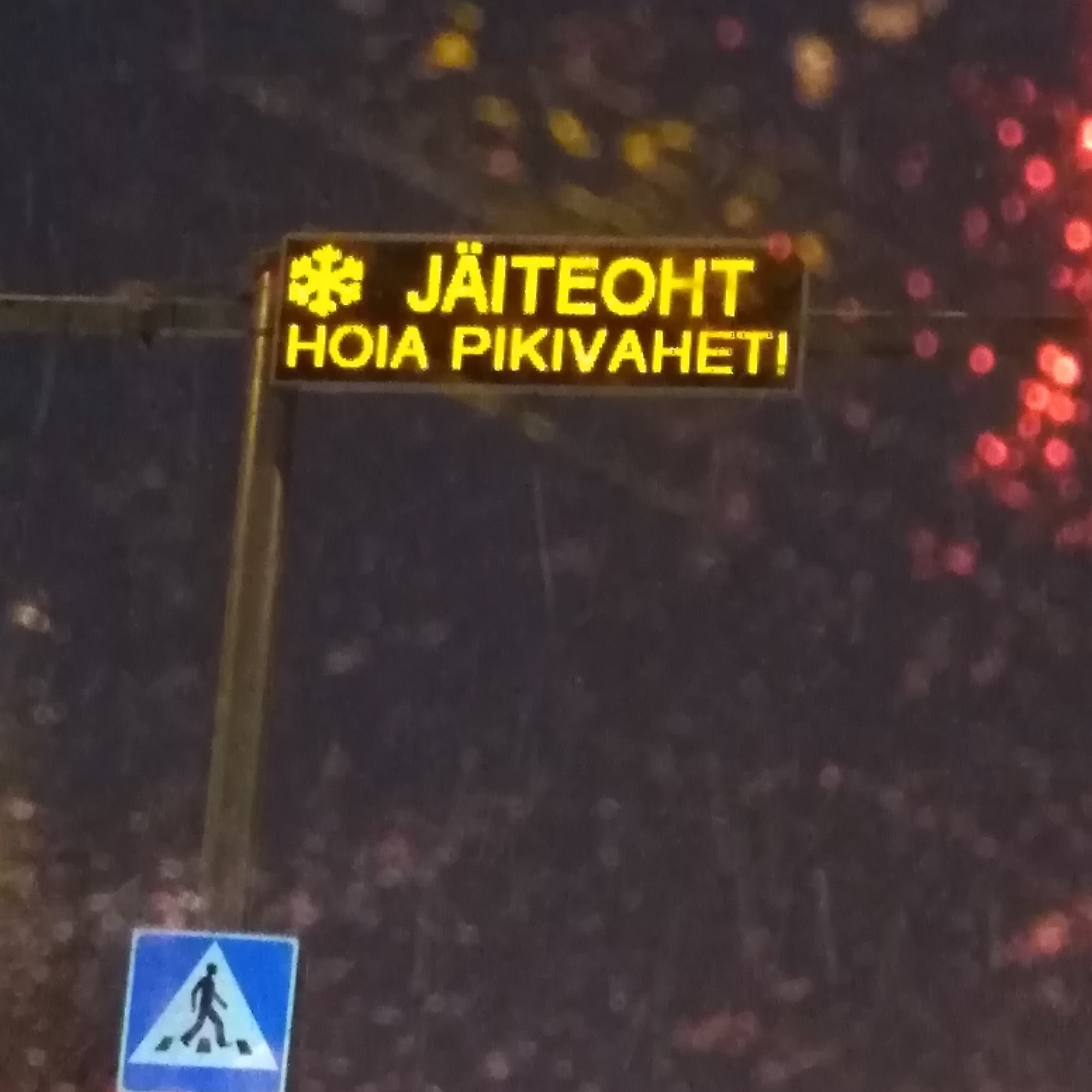You know jää (ice) andjäääär (the edge of the ice). Jäide is a type of jää – a layer of jää, that develops on the ground or objects when rain or udu/piisad (droplets of fog) jäätuvad (freeze). Jäide tends to form when the air temperature is between 0 and -3 °C. On the ground it is also known as kiilas/jää and can be many centimetres thick. Kiilas in this context means slippery, smooth, shiny.
Depending on where you look, jäide is translated as glazed frost, glaze ice or simply glaze (not the one on a cake or cookie, that's glasuur). “Glaze, also called glaze ice, silver frost, silver thaw, verglas; especially British, glazed frost. A thin coating of ice on terrestrial objects, caused by rain that freezes on impact.” (Dictionary.com)
Jäite/oht means there is a risk of glaze ice. When there is an oht (threat/danger), you hopefully receive a hoiatus (warning). Jää/vihm (freezing rain), can lead to the development of jäide. Must jää (black ice) is another dangerous ilmastiku/nähtus (weather phenomenon); it is läbi/paistev (transparent) and therefore difficult to detect. Ohutut liiklemist! Travel safe, arrive safe!
Riina Kindlam, Tallinn




